Yesterday, we were invited by Yasutaka Daimon to visit the Mukune sake brewery in the town of Katano, about halfway between Osaka and Nara in the Kansai region of Japan. This was a real treat for me, as I’ve never seen the working operations of a brewery before. Daimon-san is a very interesting guy, broad experiences and very inclusive philosophies. A real treat to visit with him, talk about sake, and of course, to visit the brewery.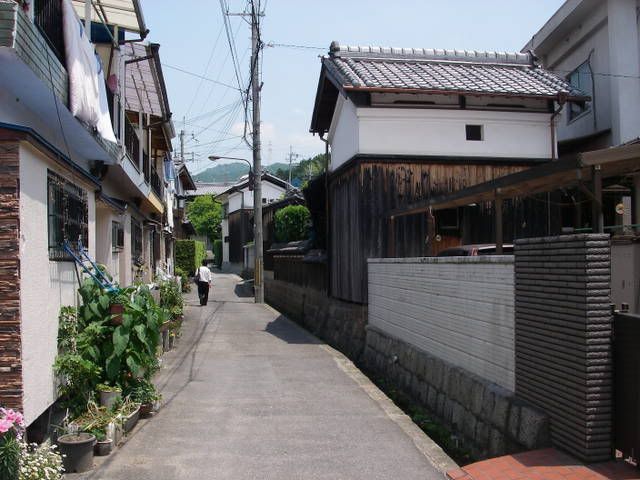
Katano is a small town, and the brewery, founded in 1826, is set back upon a hillside above the train tracks, in a warren of narrow lanes. 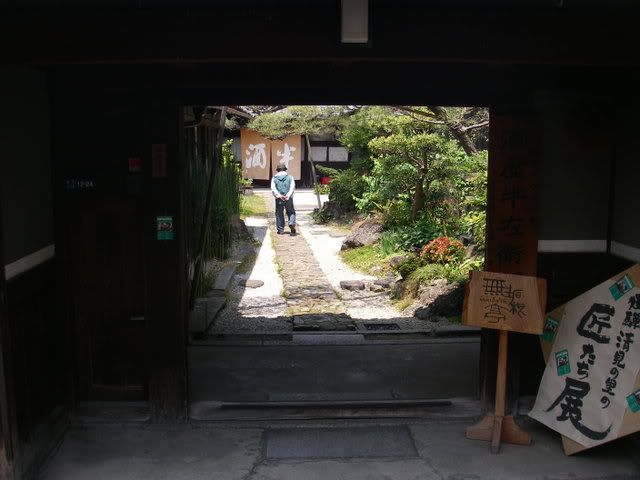
The entry to Mukune. We were greeted by Daimon-san, and chatted about many things, including his time travelling about India in the 70’s, Japanese literature, and the current state of the sake industry. An important point is that there are far fewer sake breweries now than there were even 10 years ago. Sake consumption is similarly down, with beer and shochu (a distilled grain spirit) increasing in popularity. However, for sake fans, the result is that the industry is increasingly focusing on craft sakes of higher quality. Additionally, as we learned, as fewer young people are entering the industry to replace the current generation of brewers, technology is being carefully employed.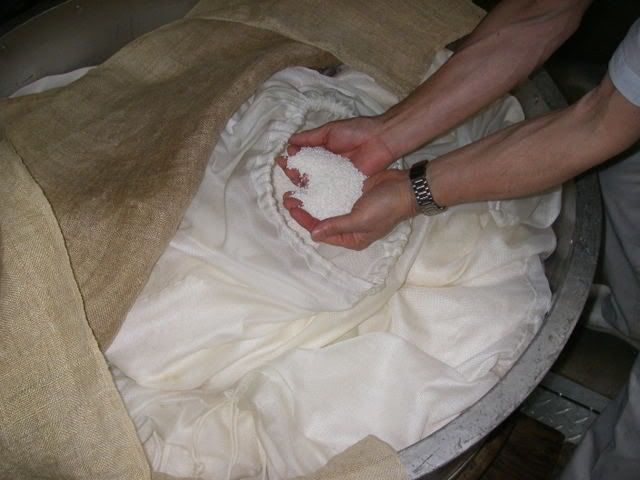
Rice milled for sake production. This batch is the famed Yamada Nishiki grain. Most of the rice is purchased by the brewery, but a small percentage is grown locally and blended. These grains have been milled to 60% of their original size (for reference, sake rice is a much fatter grain than normal table rice). After milling, the rice is bagged and allowed to sit for as much as two weeks so as to absorb ambient moisture.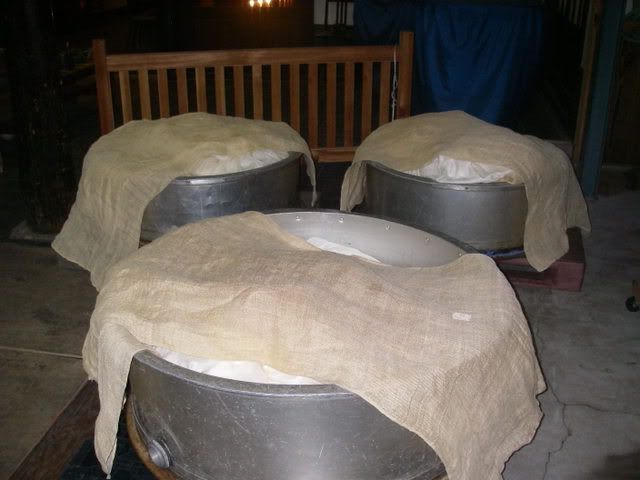
The rice is then washed and soaked until the desired saturation levels are achieved (determined by simply comparing pre- and post-soaking weight)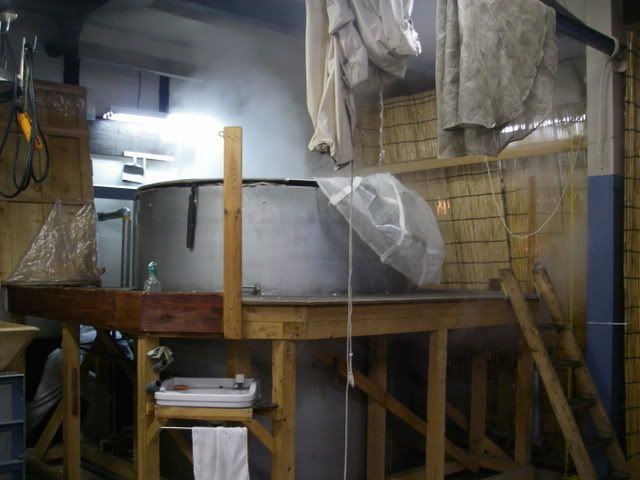
The rice is then steamed. The water comes from a local spring. Daimon-san is adjusting the controls at the back. I should note that the brewery was spotlessly clean, and we changed footwear at the antechamber of just about every room we entered. 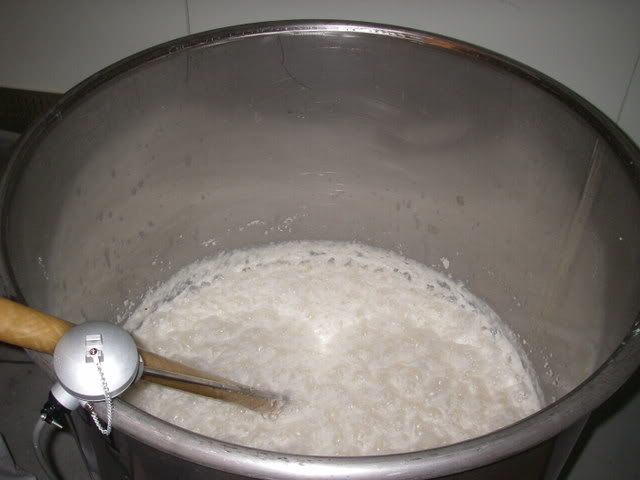
Some of the steamed rice is then used to grow yeast. This is done in a cool room, my guess around 50 degrees (F) or so. The mixture in this picture is for sake that will be prepared next week, and is still fairly liquid. We also saw the mixture that would be used the next day, and it was thick, like an oat porridge. The smell in this room was powerfully yeasty and sweet. A very familiar aroma. 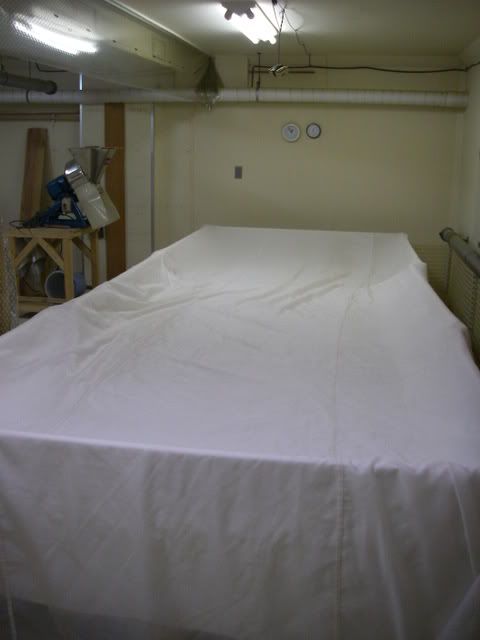
A second portion of the rice is laid out on beds for the purpose of growing the mold that will convert the starchy rice kernels into sugars. 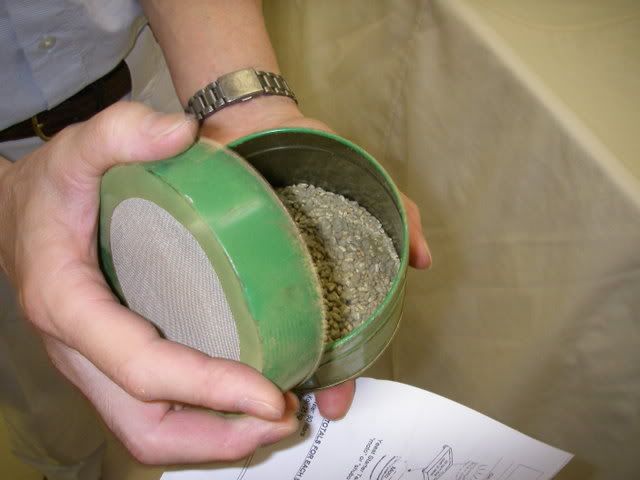
A layer of starter mold is sprinkled on top of this rice, and allowed to grow for a period of a few days.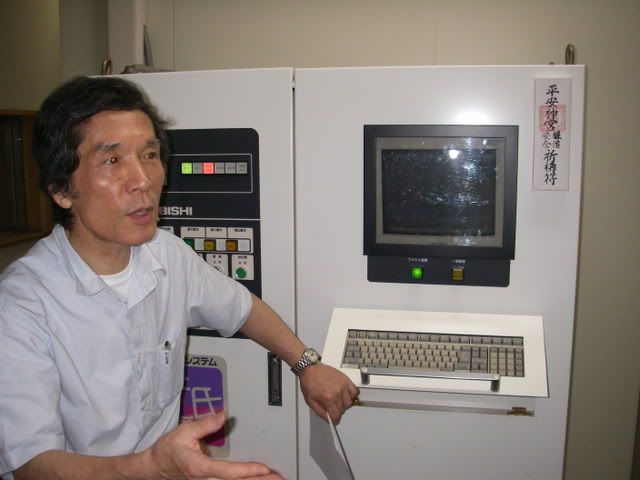
Temperature control is a critical part of this process, as this determines the rate of starch conversion. This is where much of the art takes place. We had a very interesting discussion about how this is now done. Previously, temperature control was done much more by feel, and it was difficult to control the speed and duration of temperature change. Now, the systems are electronically controlled. Similarly, where insulation of the mold growing rooms used to be using simpler materials (such as walls filled with hay and rice husks, and holes in the ceiling to keep or release heat), modern insulation materials can be used. There is a feeling amongst long-time brewers that sake quality is now higher than ever before, and that this is due to the technology now available.
An important aspect of the mold growing is that the room shouldn’t have air circulation. So, temperature is controlled through the use of exposed wiring – a method that has been used for more than 100 years now. We were in the room while no mold was being grown, but I reckon the temperature was in the 90’s.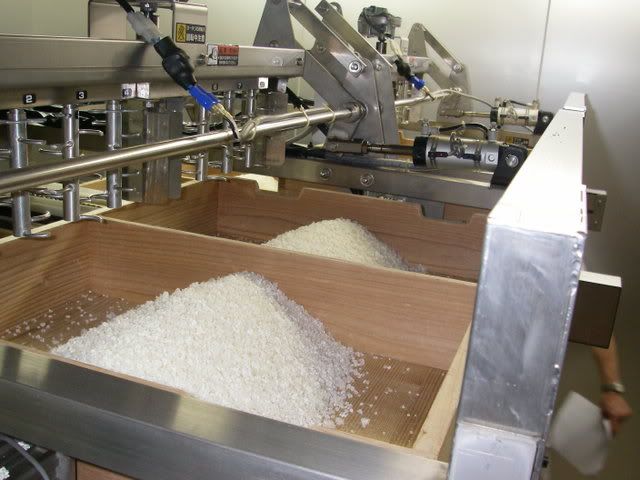
The rice that has been saccharified by the mold (yum already, right?) is ground up in preparation for starting and feeding the mash.
Daimon-san demonstrating the proper technique for stirring the mash.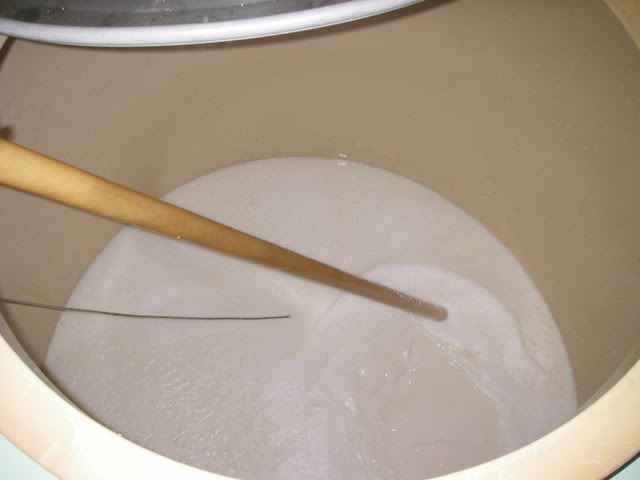
The mash is so fragrant, definitely recognizable!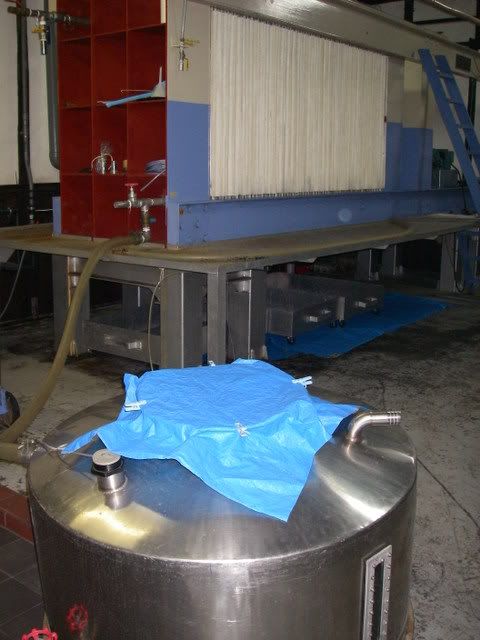
After the mash is fermented, it is taken for pressing, and depending on the sake, for filtration and pasteurization. At Mukune, they make as many as 20 different sakes – mostly junmai (pure rice sakes), but also honjozo, nigori (unfiltered), and namazake (unpasteurized, my favorite). Total annual output is 500 koku (90,000 litres), or in terms we’re familiar with, approximately 10000 cases (across all the different sakes produced).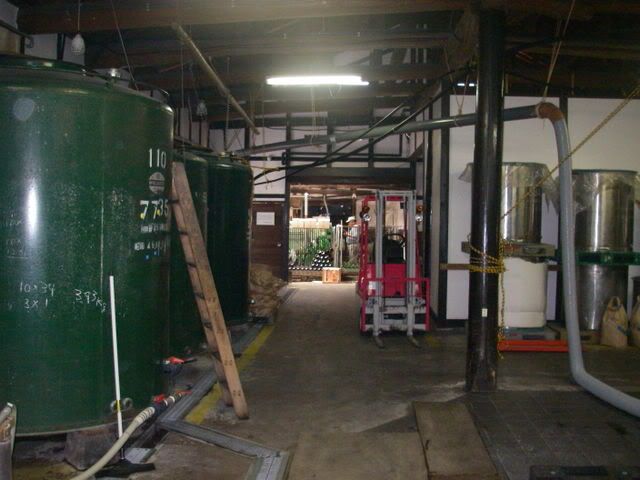
The sake is then aged in vats prior to bottling. The length of aging varies greatly, but I think a couple of months is typical. Some producers age some of their sakes directly in the bottle, but I’m not familiar with the reasons for this. A very small proportion of sake is also aged for longer periods, as much as 20 years, but these are quite rare, and taste nothing like the sake most people are familiar with.
An interesting thing to note is that prior to the serious introduction of modern equipment in the sake production process, sake was traditionally produced only in the winter months. This had to do with the availability of seasonal labourers, such as fishermen and farmers. Temperature control is also important in the koji growing process and the aging and storage of sake – all easier in the winter months. Nowadays, such seasonal labour is not as available (and few breweries have resident Toji, or master brewers). However, technology has made the process less labour intensive, less season-dependent, and more precise. Sake brewing, while not quite year round, at least not at small boutique brewers like Mukune, takes place over a longer period – we saw the last batch of yeast being made for the season during our visit (end of May). A fantastic, educational visit and a charming host who I hope to see again soon. And now, onto lunch at the brewery!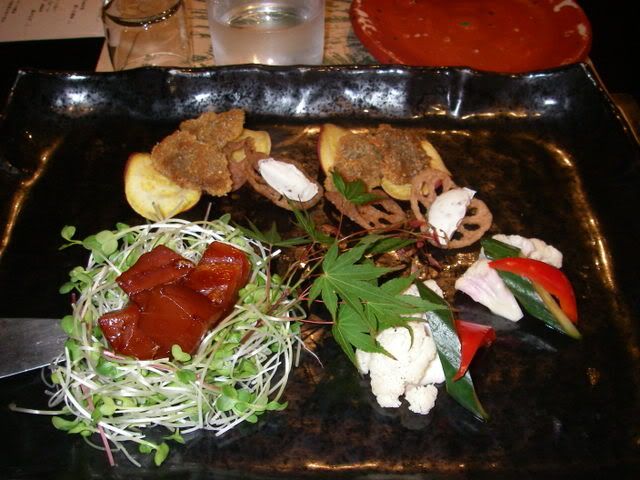
First course, fried lotus roots, pickles, and seasoned maguro.
One of Daimon-san's nigorizake – unfiltered, unpasteurized. I don’t typically care for nigorizake, as I find them overly sweet, but this wasn’t so, and had a nice bit of zing to it. Very yeasty flavor.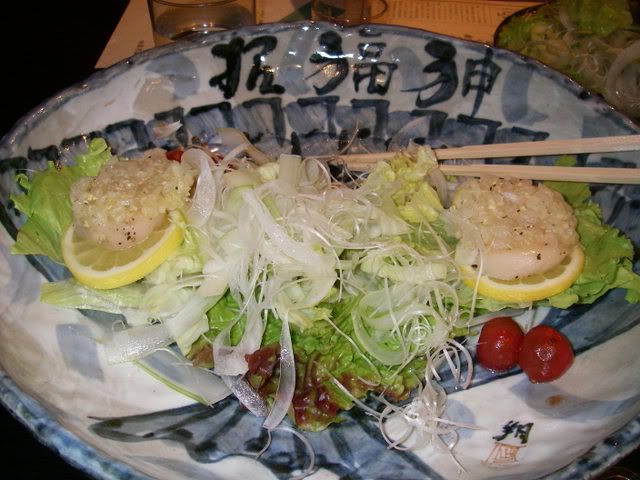
Raw scallops with minced fresh ginger, with green salad and yuzu dressing.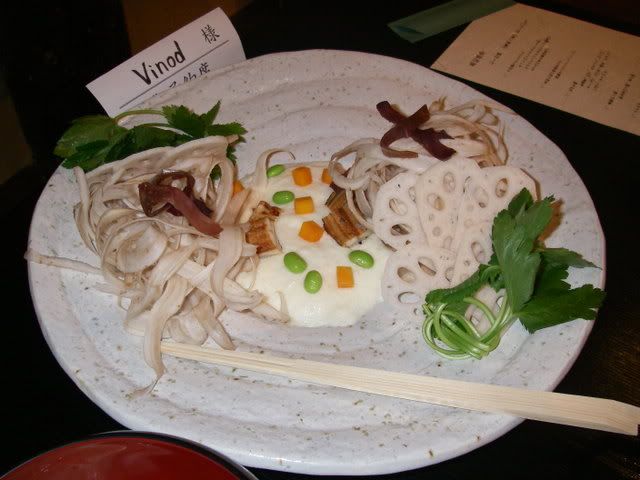
Third course was a nabe – various ingredients to be simmered in stock. Here we have lotus roots, mountain potato (yamo-imo) puree, topped with chunks of broiled eel.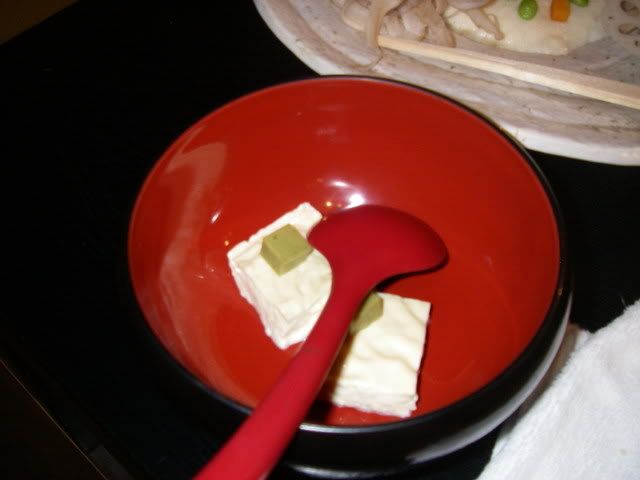
Fresh tofu for the nabe.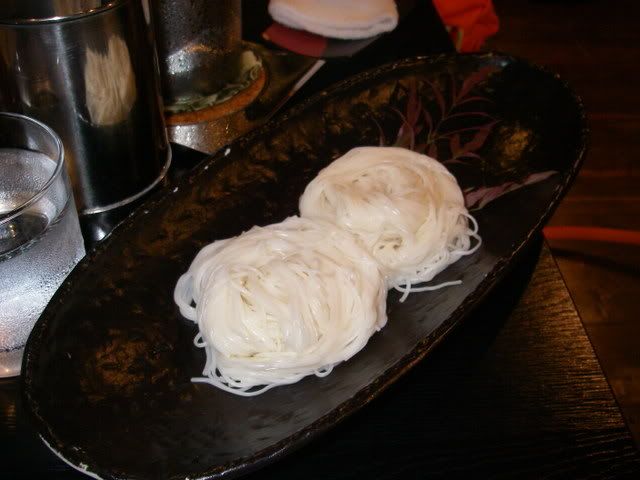
Rice noodles.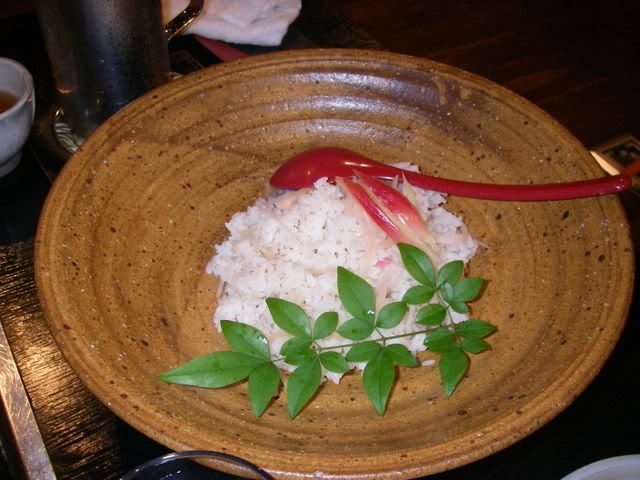
A lightly seasoned rice dish topped & mixed with shredded gingers and pickled onions.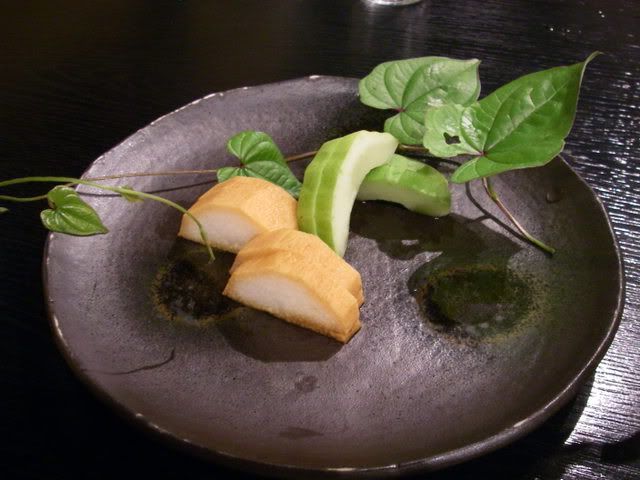
A side dish of pickled squash and more yama-imo.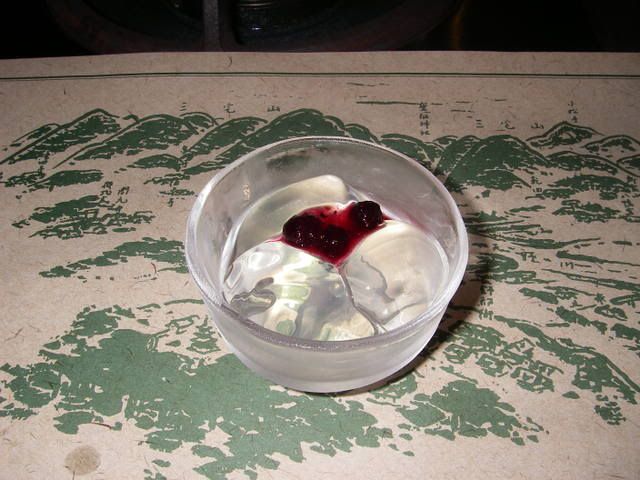
Dessert was a very very cool jelly made from sake and topped with a wild berry compote. I am going to have to try making this at home. Delicious!
A great meal to cap a great day - even managed to get back to our hotel in Osaka in time to catch the sumo. I’m of half a mind to ditch it all and apprentice myself to a brewery!
Saturday, May 24, 2008
A visit to a Sake Kura
Labels:
Fancy Grub,
Mukune,
Travel
Subscribe to:
Post Comments (Atom)




No comments:
Post a Comment